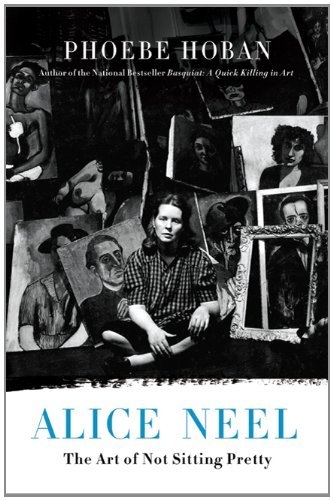Alice Neel liked to say that she was the century and in many ways she was. She was born into a proper Victorian family, and came of age during suffrage. The quintessential Bohemian, she spent more than half a century, from her early days as a WPA artist living in the heart of the Village, through her Whitney retrospective in 1974, until her death ten years later, painting, often in near-obscurity, an extraordinarily diverse populationfrom young black sisters in Harlem to the elderly Jewish twin artists, Raphael and Moses Soyer, to Meyer Schapiro and Linus Pauling, to the American Communist Party chairman Gus Hallcreating an indelible portrait of 20th century America. Neels hundreds of portraits portray a universe of powerful personalities and document an age. Neel painted through the Depression, McCarthyism, the Civil Rights Movement, the sexual revolution of the 60s, feminism, and the feverish eighties. Fiercely democratic in her subjects, she portrayed her lovers, her children, her neighbors in Spanish Harlem, pregnant nudes, crazy people, and famous figures in the art world, all in a searing, psychological style uniquely her own. From Village legend Joe Gould with multiple penises to Frank OHara as a lyrical young poet, from porn star Annie Sprinkle gussied up in leather, to her own anxious, nude pregnant daughter-in-law, Neels portraits are as arrestingly executed as they are relentlessly honest.In this first full-length biography of Neel, best-selling author Phoebe Hoban recounts the remarkable story of Neels life and career, as full of Sturm and Drang as the century she powerfully captured in paint. Neel managed to transcend her often tragic circumstances, surviving the death from diphtheria of her infant daughter Santillana, her first child by the renowned Cuban painter Carlos Enriquez, with whom she lived in Havana for a year before returning to America; the break-up of her marriage; a nervous breakdown at thirty resulting in several suicide attempts for which she was institutionalized; and the terrible separation from her second child, Isabetta, whom Carlos took back to Havana. In every aspect of her life, Neel dictated her own termsfrom defiantly painting figurative pieces at the height of Abstract Expressionism, convincing her subjects to disrobe (which many of them did, including, surprisingly, Andy Warhol) to becoming a single mother to the two sons she bore to dramatically different partners. No wonder she became the de facto artist of the Feminist movement. (When Time Magazine put Kate Millet n its cover in 1970, she was asked to paint the portrait.) Very much in touch with her time, Neel was also always ahead of it. Although she herself would probably have rejected such label, she was Americas first feminist, multicultural arits, a populist painter for the ages.Phoebe Hobans Aice Neel: The Art of Not Sitting Pretty, tells the unforgettable story of a woman who forged a permanent place in the pantheon by courageous flaunting convention, both in her life and her work.
